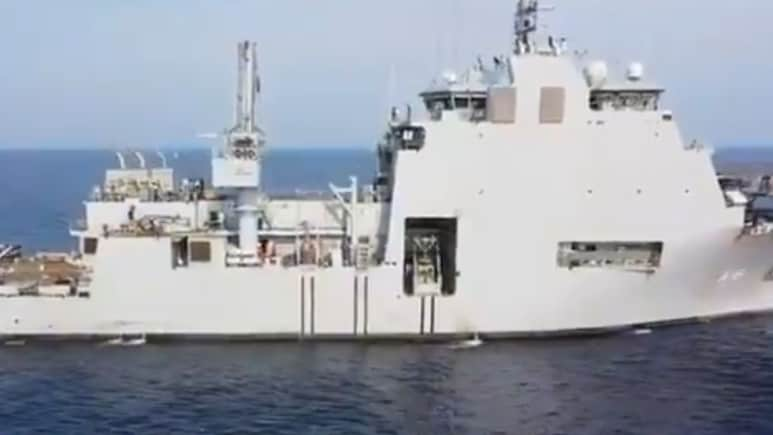
The Indian Navy has shared the first glimpse of its upcoming Nistar-class Diving Support Vessel (DSV). The indigenously built vessel, constructed by Hindustan Shipyard Limited (HSL) in Visakhapatnam, is designed to support various underwater missions such as submarine rescue and deep-sea diving operations.
Nistar, equipped with cutting-edge deep-sea diving systems, is set to join the Eastern Naval Command soon. The vessel, a major milestone under the Atmanirbhar Bharat initiative, features 80 per cent indigenous content and was developed in collaboration with over 120 MSMEs.
Nistar - The Construction Journey
— SpokespersonNavy (@indiannavy) July 12, 2025
Soon to join #EasternNavalCommand - #Nistar, India's first indigenously designed Diving Support Vessel.
Built by Hindustan Shipyard Ltd, Nistar is a shining symbol of #AatmanirbharBharat with 80% indigenisation & 120 MSMEs collaborating
She… https://t.co/TMBDNaK0qH pic.twitter.com/U8mON4svBO
Cmde Hemant Khatri (retired), Chairman and Managing Director of HSL, descrived the vessel as a national achievement.
"Nistar, when it's commissioned and delivered to the crew, is going to be the pride of the Indian Navy. It is a ship made for the Indian Navy by an Indian shipyard and of indigenous material," he said.
The vessel's operational envelope is significantly improved by the extensive diving complex on board, which includes both air and saturation diving systems, underwater remotely operated vehicles (ROVs), and side scan sonar.
One of the ship's most important functions will be serving as the Deep Submergence Rescue Vessel's (DSRV) "mother ship," which is in charge of personnel rescue and evacuation in the event of a submarine emergency.
Nistar is capable of performing deep-sea saturation diving operations to depths of 300 metres. It also has a side diving stage that can accommodate dives up to 75 metres deep.
The ship's keel was laid on December 28, 2019, and despite challenges imposed by the Covid-19 pandemic, both vessels of the Nistar class were launched within just 33 months. A total of 4,500 tonnes of steel and approximately 450 km of cabling were required to bring this ship to life.
Track Latest News Live on NDTV.com and get news updates from India and around the world

